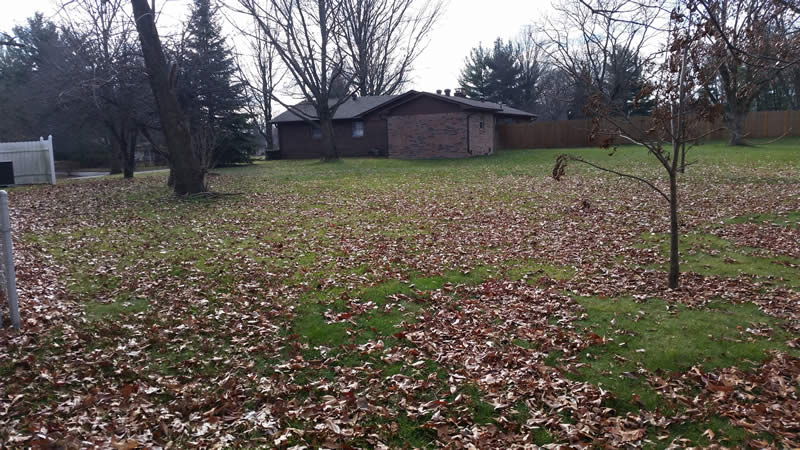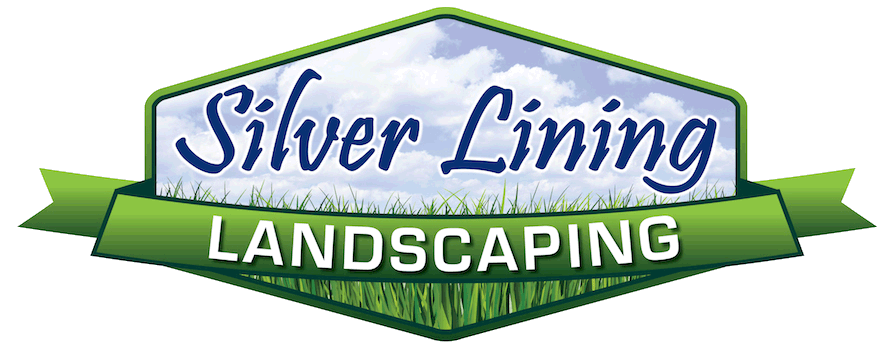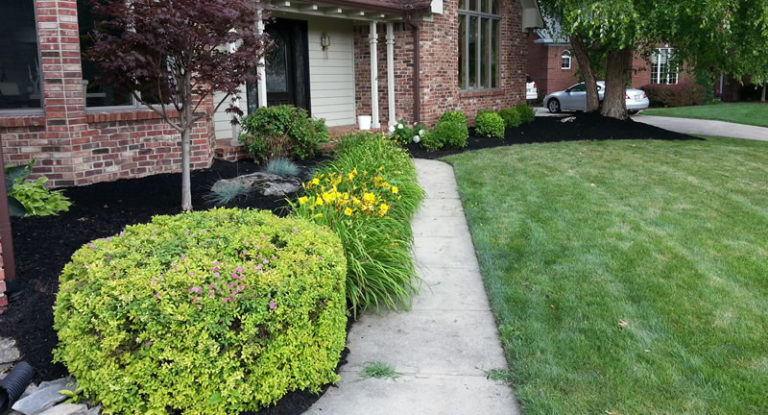Yard Maintenance Tips for Fall & Winter

Yard Maintenance Tips for Fall & Winter
When the first leaves of autumn start to fall (as they are now), it’s easy to breathe a sigh of relief and think that the brunt of your yard and landscaping maintenance work is done for the year with summer’s passing. However, you can save yourself a lot of work in the long run by performing proper lawn maintenance for the fall season that will leave your yard in much better shape when spring and summer come next year.
By following the yard maintenance tips for fall and winter listed in this article, you can get your property perfectly positioned in the fall so that you’ll have healthy growth in the future. These techniques cover a wide range of purposes, but utilizing as many as possible will leave your lawn looking better than ever before.
Mowing One Last Time
Don’t give up mowing your lawn when the first leaf falls. It’s actually important to mow your lawn one last time if the weather permits. You’ll may even want to bring the blade down a notch from your last mowing, although you may want to research the specific strain of grass used in your yard. One issue that arises with taller grass in the fall is the trapping of fallen leaves and organic debris which won’t decompose as fast. Another problem arises from moisture. During the summer, your grass needs some height to catch moisture under the midday heat and keep the soil watered and healthy. In the fall and winter, however, moisture trapped in the grass turns from a help to a hindrance. Rather than serving as an important ingredient for soil health, moisture can begin to breed fungus that damages your lawn in the long run.
Overseeding Your Lawn
Overseeding is a process dependent upon having performed thorough yard clean up and having properly mowed your grass one last time. Spreading new grass seed in dead or dying areas, scalped areas, or areas where the grass it patchy is a great way to rejuvenate your lawn for the next year without investing in a lawn renovation.
Dethatching and Aerating
When you bring out a rake for the leaves falling in your yard, you might want to consider dethatching your lawn too. Performing proper yard clean up in the fall will, like keeping the grass short, help nutrients that can’t quite reach the soil make it where they need to. A regular rake should be sufficient for most jobs, but thatch rakes are a more tailored option if you want to do a premium dethatching job. For particularly tightly packed soil, you may want to consider aerating, a process where your lawn is punctured with a special machine to encourage oxygen and nutrient uptake.
Leaf Cleanup and Removal
If you have many trees surrounding your property leaf cleanup can be a real big chore. Consider calling a team of pro’s like Silver Lining Landscaping and we can use our equipment and manpower to make short work of your accumulating leaves.
If you want to go beyond using a rake, a mulching mower or a mulching leaf blower can help break down your leaves to make better compost without as long of a process necessary for healthy decay.
Trimming Hedges, Shrubs, and Trees
Trimming your hedges, shrubs, and trees before winter falls is a crucial part of a yard clean up that will help them with their future health. You always want to keep overgrown areas in check, and dead limbs need to go. You should make the trees that are close to your house a priority. Dead branches or limbs left in the winter can fall and cause damage that you won’t want to deal with. If they are close to your home they can impede your view, and make it easier for rodents or pests to access your home. It’s much better to give any hedges, shrubs or trees a good snip now and save yourself the trouble later.
Removing Organic Debris From Your Mulch Beds
Like with your lawn, failing to clean out mulched beds can provide an all-too-attractive place for fungi and bacteria to take root. Taking your rake or even a blower to garden beds and making sure all of the organic debris from the year is gone will leave your beds much healthier for the winter. Cleaning out the mulch beds will also give them a clean, uniform appearance, and ready them for the installation of a new layer of mulch.
Installing Mulch In Your Beds
Mulch is a great way to protect your landscaping beds during the winter months. Spreading mulch helps retain moisture, it provides insulation for the root systems from the cold, and even better it provides a very clean, uniform, look to your beds, improving your properties appearance and curb appeal. We have many different mulch options available depending on the look and texture you’d like for your beds.
Blowing Out and Maintaining Irrigation Systems
The last tip is less directly related to your lawn itself than the others and more about the systems you’ll need to deal with your lawn come spring, but it serves as an equally crucial part of landscaping maintenance. You won’t need to use your irrigation throughout the winter, but that doesn’t mean you won’t once the thaw comes. You’ll want to shut off any water flow and remove any water inside of the irrigation piping. This can be easily done with an air compressor, not your run of the mill shop compressor, but an industrial or commercial grade compressor.
This way, you’ll avoid freezing and cracking in irrigation systems due to neglect. It’s best if you check your irrigation a few times throughout the fall and winter and maintain it as necessary, so that there won’t be any need to spend time and money on repairs.
These landscaping maintenance tips might seem like a bit of a long checklist for the “downtime” in the year for lawn maintenance, but these are largely simple tasks that often feed into each other. By taking this guide to heart, you can ensure that your lawn is in the best condition it can be, and impress all your neighbors when spring and summer finally come.
If you need help with your fall and winter lawn maintenance give Silver Lining Landscaping a call (317) 902-5411 or fill out our online contact form and we’ll get right back to you to schedule a consultation for your property.

